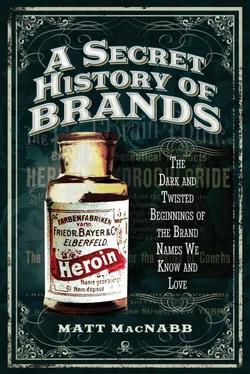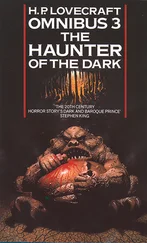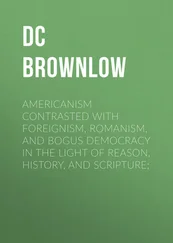In 1924, Coco wanted to expand the customer base for her Chanel No. 5 fragrance, but a move that grand required some serious financing. The Parfums Chanel corporate entity was created with backing from the well-to-do, Jewish, Wertheimer family. I note that they were a Jewish family for reasons that will become integral later in this chapter. The deal wasn’t even slightly in Chanel’s benefit, giving a seventy per cent stake in the company to the Wertheimers and only ten per cent of the stock to Coco for the licensing of her name. The remaining twenty per cent was awarded to Theophile Bader, who was instrumental in brokering the deal. The entire experience left Coco Chanel bitter.
The Successful Monster
Chanel would find more glamour in her life when she was called out to Hollywood to design for the stars in 1931, at the direct invitation of famed silver-screen studio head, Samuel Goldwyn. Quickly becoming a fashion legend and a legitimate member of the ‘in’ crowd, Coco revelled in her newfound American fame. She befriended various posh celebrities of the era such as Russian composer Igor Stravinsky and artist Pablo Picasso. Chanel would reach the peak of her fame and reputation in the 1930s, and by 1935 she was running five boutiques on Rue Cambon in Paris and was employing over 4,000 workers.
When the Second World War reached Paris, Chanel actually closed four of her boutiques, leaving many women out of work. A number of her biographers suggest that this move was done in retaliation to a labour dispute she had had with her workers a few years before, and that the opportunity to put them out of work was a vindictive action. The shop at 31 Rue Cambon remained open, often frequented by American soldiers looking to obtain gifts to send to their sweethearts back home. Little did these brave men know that the head of the House of Chanel was working for the enemy.
It is often echoed in biographies and articles that Coco Chanel was a horrible woman, a monster even; a sentiment that has been presented time and again from various sources. There is no doubt that her association with the Nazis was heinous, but this reputation came long before those revelations began to become public over a decade ago. One has to wonder how much of Coco’s poor reputation has to do with her being savvy and a strong businesswoman who took no prisoners and would not accept defeat? Would a man be given the same labels, or would he be labelled ‘industrious’ and ‘strong’? Her beginnings, born into a workhouse and abandoned in her early adolescence, made Chanel strong and determined. It is certainly a strength that should be admired, even if her actions shouldn’t always have been.
The Nazi Occupation of France
It was during the Nazi occupation of Paris that Coco Chanel would embark on a path that was to leave her name forever tarnished. It was in the early years of the Second World War that Hitler set his sights on the spoils and glamour of France. The German forces, complete with planes and tanks, rolled into France in May of 1940. The Fall of France was a brief affair; the French forces were defeated and surrendered in just six weeks. It was a humbling and even humiliating experience for the French; after all, they boasted the second most powerful military in Europe at the time. The reputation for military excellence came for the French during the First World War.
Once France had fallen, the French signed a surrender armistice with Germany that, in simplified form, split France into an occupied and an unoccupied zone. The northern part of France, including Paris, would be occupied by the Nazi regime. The Nazi occupying forces would set up a puppet government, referred to as the Vichy regime. This anti-Semitic French governing system was established to control the region more easily. Vichy was an area in France that, in the pre-war era, was a holiday destination known for its spas and refreshing water. The Nazis also moved into Vichy, along with the new French government officials. There was a serious need for space, so they moved into the various hotels in the city, kicking out the tourists. The head of the Vichy regime was French First World War hero Marshal Phillipe Pétain. The aged war hero would soon fall prey to the influence and menace of the Nazi propaganda machine.
On Thursday, 24 October 1940, French President Pétain and his Vice President Pierre Laval, met with Adolf Hitler in the isolated commune of Montoire. Hitler came to the meeting with Dr Paul Schmidt, his translator, and his Foreign Minister, Joachim von Ribbentrop. The aim of Pétain was to negotiate the armistice with Germany and end their mutual hostilities for the good of his country. His actions that day, and the infamous photograph of him shaking hands with Adolf Hitler, would call his loyalty to France into question in the coming years and he is sometimes regarded as a collaborator. In reality, by working with the Nazis instead of against them, he was doing what he believed to be right. He agreed to peace, but refused to join the Nazi war machine. On 30 October 1940, Pétain addressed the French people in a speech titled ‘Cette Collaboration diot être sincère’, which revealed to the people that he had met with Hitler and had every intention of working with the Nazis and meeting their terms.
President Pétain had the trust of the French people, but his speech left them confused and uncertain about what was happening. The French expected more resistance and instead they got compromise. There was a certain level of resistance and the desire to resist the Nazi regime by the French people, but there was very little that the average citizen could actually do. The best that most could manage was the silent resistance of keeping their lives as normal as possible and refusing to acknowledge or accept the Nazi occupation of France, a move that has come under heavy criticism over the years. Silence of resistance, or silence of complacency? On the other hand, resistance could easily mean death.
Adolf Hitler travelled to Paris only once during the war, with Albert Speer his Minister of Armaments and War Production, and entourage of various other Nazis. The Fuhrer visited the Eiffel Tower and Arc de Carrousel as a tourist on 28 June 1940. Hitler may not have remained in Paris, or even France, but the Nazi soldiers did. They occupied the streets of Paris with a menacing and foreboding presence.
On 20 June 1942 the Nazis began to require every Jew in France to sew a patch of the Star of David, whether they were French or foreign. If you were not wearing the star and were suspected to be a Jewish man on the streets, you could be stopped and questioned and even suffer the indignity of being forced to pull your pants down to prove the point, to extreme humiliation and embarrassment. It is an ancient tradition for Jewish males to be circumcised, a practice not commonly seen at the time in Europe. The Jews in France were eventually rounded-up and deported to concentration camps. The single largest round up of Jewish people during the occupation of France took place on 16 July 1942; approximately 15,000 Jews, many of whom were women and children, were rounded up by the French police and placed in a sport’s stadium for a week without food, water or sanitation. A good number of people died from thirst and malnutrition. The Jews from this roundup were eventually transferred to Auchwitz, never to be seen or heard from again.
Control of Chanel No. 5 removed from Jewish Owners
The deal that brokered Parfums Chanel left Coco bitter and her ego bruised, not to mention her pocketbook. The company was a goldmine from which she was unable to adequately profit. Chanel lamented her decision, ‘I signed something in 1924. I let myself be swindled.’ Those around Chanel advised her that all was well with the profits that she was enjoying, but Chanel was convinced that she was being taken for a fool. She didn’t care to take into account the amount of financial investment that it took to bring Chanel No. 5 into the worldwide marketplace. Chanel would hire attorney Rene de Chambrun, a suspected Nazi collaborator, to begin various lawsuits against the Wertheimers in 1930. Over the years her various suits were wildly unsuccessful and it wasn’t until the Nazi occupation of France that she would get her first viable opportunity. The desire to gain control of the company bearing her namesake, and a relatively loose moral fibre, instigated Chanel to take advantage of the Nazi aryanisation of all Jewish-owned businesses.
Читать дальше












